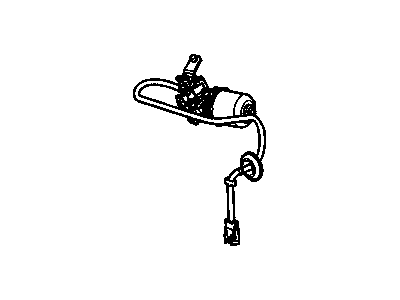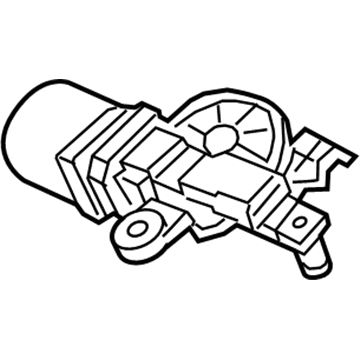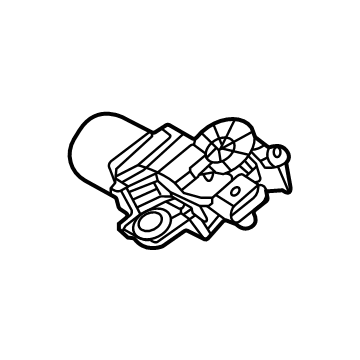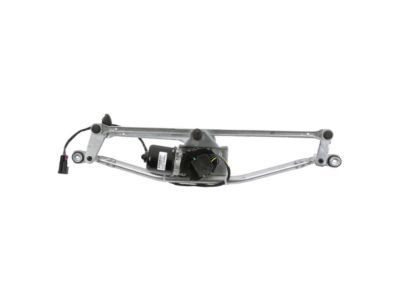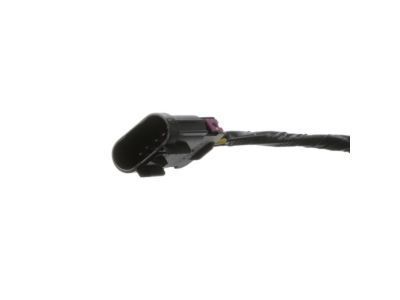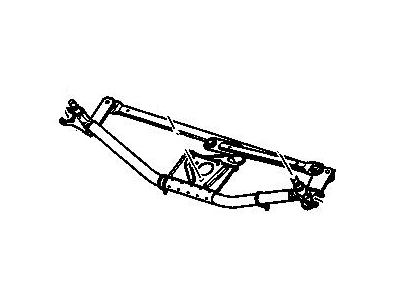
My Garage
My Account
Cart
Genuine Chevrolet Colorado Wiper Motor
Windshield Wiper Motor- Select Vehicle by Model
- Select Vehicle by VIN
Select Vehicle by Model
orMake
Model
Year
Select Vehicle by VIN
For the most accurate results, select vehicle by your VIN (Vehicle Identification Number).
6 Wiper Motors found
Chevrolet Colorado Motor Asm,Windshield Wiper
Part Number: 88958223$232.89 MSRP: $414.03You Save: $181.14 (44%)Ships in 1-2 Business DaysChevrolet Colorado Motor Assembly, Wsw
Part Number: 84916791$63.44 MSRP: $119.70You Save: $56.26 (47%)Ships in 1-3 Business DaysChevrolet Colorado MOTOR ASM-WSW
Part Number: 84974750$58.20 MSRP: $104.40You Save: $46.20 (45%)Ships in 1-2 Business DaysChevrolet Colorado MODULE ASM-WSW SYS
Part Number: 85695036$92.59 MSRP: $174.70You Save: $82.11 (47%)Ships in 1-2 Business DaysChevrolet Colorado MODULE ASM-WSW SYS
Part Number: 87838322$92.59 MSRP: $174.70You Save: $82.11 (47%)Ships in 1-2 Business Days
Chevrolet Colorado Wiper Motor
Wiper Motor is used in Chevrolet Colorado vehicles to operate the windshield wipers that have the responsibility of wiping rain, snow or any dirt that may be in front of the car for good visibility. This sort of electric motor offers possibility of operating at various speeds, making it possible for the drivers of the vehicle to be able to set the wiper to operate at a speed that would correspond with the current weather. Both new and remanufactured Wiper Motors can be used in the Chevrolet Colorado models. New motors are usually acquired directly from the manufacturer, although new ones that can be purchased are also old motors that passed through refurbishing with new parts installed to meet the current standard. This differentiation of new and renew motors affords more freedom with maintenance and the prospect of replacement for owners of vehicles.
Each OEM Chevrolet Colorado Wiper Motor we offer is competitively priced and comes with the assurance of the manufacturer's warranty for the part. Furthermore, we guarantee the speedy delivery of your orders right to your doorstep. Our hassle-free return policy is also in place for your peace of mind.
Chevrolet Colorado Wiper Motor Parts Questions & Experts Answers
- Q: How to remove and install the Wiper Motor on Chevrolet Colorado?A:To troubleshoot wiper issues, start by checking the battery's condition and charge. If the battery is fine, manually operate the wiper arms after removing the wiper motor to check for any binding in the linkage or pivots. Lubricate or repair as needed and reinstall the motor. If the wipers still move slowly, inspect for loose or corroded connections, particularly the ground connection. If all connections appear fine, consider replacing the motor. In case the wipers fail to work when activated, check the Fuse and repair the ground connection if necessary. If the motor still doesn't function, test for voltage at the motor in the HI position. If voltage is present, remove the motor and test it separately. If it works, check for binding linkage, and if it still doesn't work, replace the motor. If there's no voltage, examine the wiper control relays. If voltage is present at the relays but not at the motor, have the switch tested. If the switch is fine, the wiper control relay may be faulty. For an inoperative interval function, check the continuity of the wiring between the switch and wiper control module. If the wipers fail to park, check for voltage at the park feed wire of the motor connector when the switch is off but the ignition is on. If no voltage is present, inspect for an open circuit between the motor and fuse panel. To remove the wiper motor, disconnect the negative battery cable, remove the wiper arm nuts, and mark the positions of the arms before removing them. Take off the cowl grille and disconnect the electrical connector at the motor. Remove the motor/linkage mounting bolts and separate the assembly, then unbolt the motor from the linkage. Some rocking motion may be necessary to free the wiper drive from the cowl. Installation is the reverse of removal.
Related Chevrolet Colorado Parts
Browse by Year
2024 Wiper Motor 2023 Wiper Motor 2022 Wiper Motor 2021 Wiper Motor 2020 Wiper Motor 2019 Wiper Motor 2018 Wiper Motor 2017 Wiper Motor 2016 Wiper Motor 2015 Wiper Motor 2012 Wiper Motor 2011 Wiper Motor 2010 Wiper Motor 2009 Wiper Motor 2008 Wiper Motor 2007 Wiper Motor 2006 Wiper Motor 2005 Wiper Motor 2004 Wiper Motor
